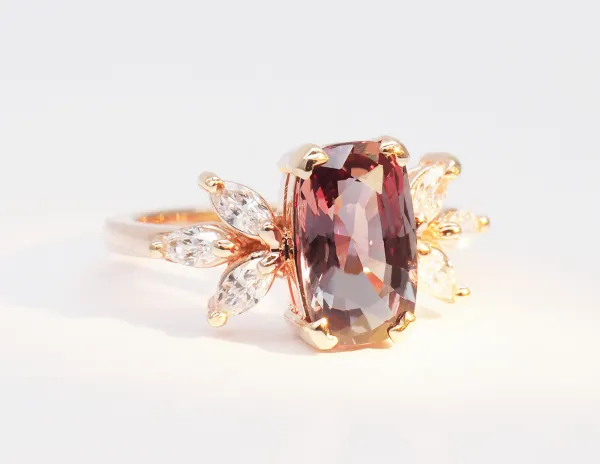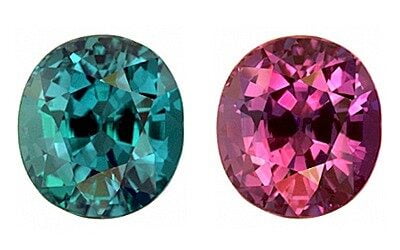June Birthstone: Alexandrite
The discovery of Alexandrite gem has been defining, ever since then, it has been the definition of color-change. As a relatively newly-discovered gemstone less than 200 years ago, it is the finest color-change gemstone known.
It all began in Russia’s well-known mountainous range of the Urals, where the first specimen was first discovered in the 1830s. This new specimen was initially thought to be an emerald due to its green body color. However, a mineralogist was confused with its high hardness. Further investigations took place to determine the species of the stone. During that evening, under the glow of candlelight, the gemstone suddenly appeared red instead of green. Soon, the gemstone was classified as a new variety of chrysoberyl, and eventually was named after a young future Tsar of the Russian Empire, Alexander II.

A member of the chrysoberyl family, alexandrite is a beryllium aluminum oxide mineral. Although ‘beryl’ is part of both names, the two are completely distinct as one being an oxide and the other being a silicate. As mentioned above, the chrysoberyl family has a higher hardness of 8.5 compared to beryl’s 7.5 on the Mohs scale. Separately on the rough side, this mineral species develops in the orthorhombic crystal system, often prone to trillings, a triplet of three crystal twins.

Typically, chrysoberyl has a colour range of yellow to yellowish-green. However, varieties that featured phenomenal displays are what made the mineral well known, namely Cat’s Eye Chrysoberyl and Alexandrite. Special terms were given like the milk and honey effect for the cat’s eye, and the “emerald by day, ruby by night” for the Alexandrite, which only applies to the chrysoberyl varieties.
The Alexandrite gem also possesses pleochroism, a characteristic most visible during its rough stage. Pleochroism is showing different colours in different crystal directions under normal daylight or equivalent. Despite that, it may not be as distinctive as its colour-change. That distinctive feature illustrated when the face-up colour of bluish-green under daylight or fluorescence light turns to reddish-violet under incandescent light.

The color-change phenomena are also known as “the Alexandrite effect”. While few other minerals like corundum and garnet can display color-change, none show such dramatic and vivid color-change as an exceptional Alexandrite.

How the colour-change works in alexandrite are caused by two factors, elements of chromium and the spectrum of light. Apart from being a colouring agent, chromium also decides which spectrum to absorb and emit. Different lights contain different colour intensity within the spectrum. For example, daylight contains higher volume blue and green; while a higher volume of red for incandescent light. Needless to say, whichever colour has a higher volume, the stone will be it. To better view the green side of alexandrite, best use morning or noon daylight, as evening daylight contains a higher proportion of red.
The scarcity of this precious gemstone is unquestionable. To describe its rarity, forming this rare gemstone requires rare elements such as beryllium and chromium. On top of that, only a handful of countries like Brazil, Sri Lanka, and Tanzania are capable of yielding small supplies of Alexandrite into the market. That small amount was important, as Chrysoberyl and Alexandrite are mostly found by chance in secondary alluvial deposits.
Despite the limited supply of Alexandrite, the demand for it remains high. In the years to come, Alexandrite will continue to be one of the most prized gemstones in the world.
View our Alexandrite collection here: https://www.fareastgemsjewellery.com/collections/all-gemstones/alexandrite
Remember to subscribe to our monthly e-newsletter. For latest updates on The Gem Museum, follow us on Facebook or Instagram.


